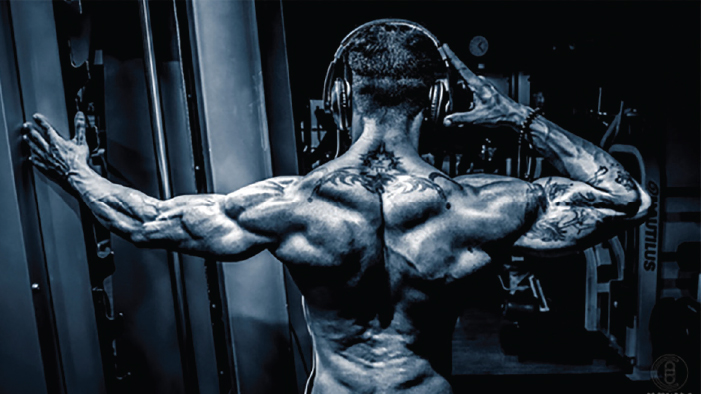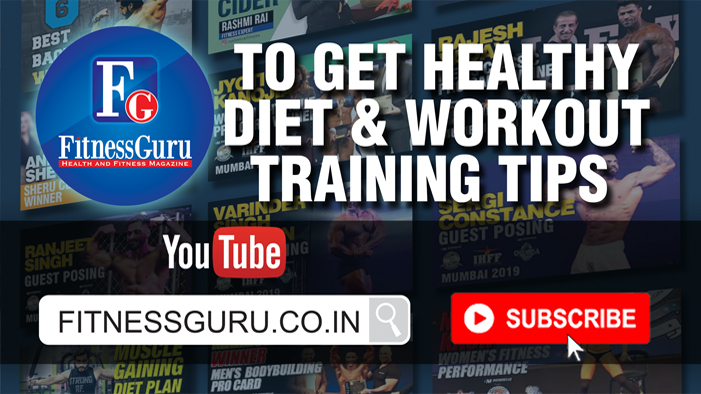Home Interviews the journey of fitness by ace champion mangesh gawde
The Journey Of Fitness By ACE Champion Mangesh Gawde

By Jinnie Gogia Chugh
This article is for beginners who have just initiated their journey into fitness, and was a part of a manual that mangesh worked on a few years.

Starting a fitness journey can be intimidating. There are workouts to learn, diets to follow mind set to conjure, and self-consciousness to overcome. But making the decision to start a fitness routine and making strides toward improving your health are the absolute best things you can do for yourself— mind and body. So give yourself a big pat on the back, then listen to the sage advice of trainer,
In 20 years of my fitness Journey as a Trainer and Fitness Manager and an Entrepreneur (gym owner), get lots of basic questions from the audience where in I will be sharing my experience in the trouble shooting on their queries.
Q. I really don’t know how to use the equipment or do any workouts. How do I get started ? This is my first day of work out!
As a complete beginner, the gym can certainly be an intimidating place. This is why I suggest hiring a personal trainer for a good 8 to 12 sessions. He or she can teach you on what muscle groups each piece of equipment works, as well as proper exercise technique, how to Breathe during workout sets, and rep tempo. A good trainer will also help you develop a workout program that is suited to your present level of fitness, particular goals, and that addresses any injuries or limitations that you may have.
Q. What type of training should I do to lose weight ?
When it comes to losing weight, you need a combination of weight/resistance training and cardiovascular exercise. Many people make the error of performing too much cardio and neglecting weightlifting, thinking that only treadmills, cross trainers, and stair steppers are responsible for burning fat and get awesome results but this is not true
While cardio will certainly help you burn extra calories, it’s weight lifting that is going to stimulate the metabolism (so that you become a fat-burning zone), change the composition of your body, and bring about the shape you want. I suggest alternate days lifting weights and three days performing cardio—preferably first thing in the morning or based on your lifestyle.
Q. What type of training should I do to build strength and muscle ?
For building strength and muscle, you’ll need a well-designed weight training program that primarily utilizes WEIGHTS and compound (multi-joint) exercises. A THREE -day-per-week program works quite well for most, FULL BODY workout pattern. This allows you to hit each muscle group every alternate day, while providing you next day for rest and recovery (which is when actual growth takes place).
I suggest starting with about four exercises for only three sets each for major muscles like back, quads, hamstrings, chest, and shoulders. For smaller groups like biceps, triceps, traps, abs, forearms, and calves, you’ll do well with just two movements for two sets each. Perform one warmup sets before each exercise (more are needed earlier in the workout), and 12 to 16 reps.
Q. How often do I need to work out ?
How often you need to work out depends on your fitness level, goals, and time limitations (lifestyle). The loftier the goal, the more time you will have to spend going after it. That said, if you have a very demanding job, a family, or other important personal responsibilities, you may not be able to spend hours per week working out. Then you’ll need to be patient when it comes to reaching your goal. To make awesome progress you need to hit the gym at least three days per week for an hour at a time. However, as time passes, you’ll begin to require more time in order to see continued progress. I suggest starting out with three gym sessions per week and adding to your program every month or so.
Q. How much time should I spend in the gym ?
This depends on how fit you currently are, what goals you have set for yourself, and how much time you have to SPEND to working out. For some people it may be best to schedule three hour-long workouts per week, while others may find it more convenient and beneficial to train five to six days per week—but for only 20 to 30 minutes.
My best suggestion it’s best to think about how many total hours per week you’ll spend in the gym, and then decide how best to spread it out. Another important point to consider is quality of time and not just quantity. Someone who is very dedicated and focused on their training can often get far more accomplished results in just 30 minutes than someone who’s there for an hour, but constantly distracted by their PHONE, CHATTING with others, and watching rather than doing.
Q. How much rest do I need ?
Certain exercises are far more demanding on the body than others and require more rest between sets. For example, a set of 15 reps of barbell squats will not only tax the thighs, glutes, and lower back, but will also have you breathing like a freight train. You may find that you need a good three to four minutes before you are ready to get to the next set. On the other hand, performing 15 dumbbell side laterals may only require 40 to 60 seconds of a recovery time.
What your primary goal is and how will you work best to reach it. Someone who’s in the gym to build massive size and power will want to rest for longer periods in between sets so as to be able to lift maximum weight for maximum reps. When you’re looking to burn body fat and increase endurance, it’s best to keep heart rate elevated and move quickly from set to set, even if the weights are lighter.
As for between workouts, you may find that as a beginner a full day of rest is needed in between weight training sessions. However, as you progress and become more resilient, it’s possible to train for days without a break, just as long as you never work the same muscles two days in a row. Cardio can be done daily.
Q. Should I start a supplement regimen ?
In the beginning of your health and fitness journey, the main focus should be on implementing an intelligent and efficient workout regimen and a healthy and balanced nutrition program. Anyone who tells you to immediately jump on all sorts of sports supplements is either misinformed or trying to make a buck (BAD SUGGETION). After spending eight to 12 weeks in the gym, working hard and consistently while carefully following a PROPER diet, it’s appropriate to think about adding supplements into the mix.
Q. How do I know my training is right path? What performance measures should I be tracking ?
Carefully tracking your progress is extremely important when embarking on any kind of physical fitness program. If possible, it’s a good idea to meet with a coach or trainer every two to four weeks to have your weight, body fat, and complete measurements taken.
Oddly enough, a very good indicator of progress is feeling how your clothes fit. Obviously if you are looking to get bigger and more muscular, you know you are headed in the right direction if your shirts are fitting tighter in the arms, chest, and through the back. The scale is not always a telltale sign of whether your program is yielding results, since it’s very much possible for people, especially women, to drop several sizes without losing a single pound. Always remember that muscle weighs more than fat, but it takes up far less space.
